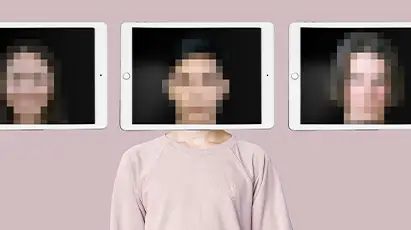Are deepfakes harmless fun or a weapon for bullies?
Deepfake technology uses deep learning (which is a subset of machine learning) to create very realistic images, videos, or audio. This technology mimics the voice or likeness of its target and superimposes it on an existing recording or image. Deepfake apps are usually quite easy to use, and this has made deepfakes a popular tool for bullying. For example, a child's face might be inserted into a music video with suggestive dancing or even pornographic content. The emotional damage and humiliation the child experiences, as a result, can damage their self-esteem and their relationships at school.
It's important to stay informed and teach your children about the precautions to take against deepfakes.
Talking to your child about deepfakes
-
Watch and discuss deepfakes together
You may be surprised to find that your children's tech-savviness means they may already have a keen eye for fake online content. Focus their attention on issues such as responsibility, consent, and the importance of not using your face or voice without their permission. Create a safe space for them and let them know that they can always come to you or the authorities if they are bullied using deepfakes.
-
Learn to spot deepfakes
Although deepfakes are increasingly difficult to spot, there are some signs that can help. Look for irregularities such as unnatural blinking, inconsistent audio and lip movements, or glitches near the hairline or face. Lighting inconsistencies – such as uneven shadows or different reflections in the eyes – can also be clues. Also consider the content itself; if the message seems outrageous or emotionally manipulative, it could be a deepfake. Keep in mind that as technology improves, these indicators may become harder to spot.
-
Encourage thoughtful online behaviour
Talk to your children about sharing pictures and videos of themselves online in public groups. Explain how these can easily be misused to create deepfakes and suggest alternatives encouraging more thoughtful online. Framing these precautions as empowering choices rather than restrictions may encourage a more positive response.
-
Explore and educate together
While you can educate your child, they can also introduce you to some interesting knowledge in return. Maybe they even use apps such as FaceApp or FaceSwap and you might create some harmless and fun videos together to educate each other. Your child will boost their understanding of this technology while also learning about its ethical use.
You can read the original article from our DfL partner, ESET: Are deepfakes harmless fun or a bullying weapon?













